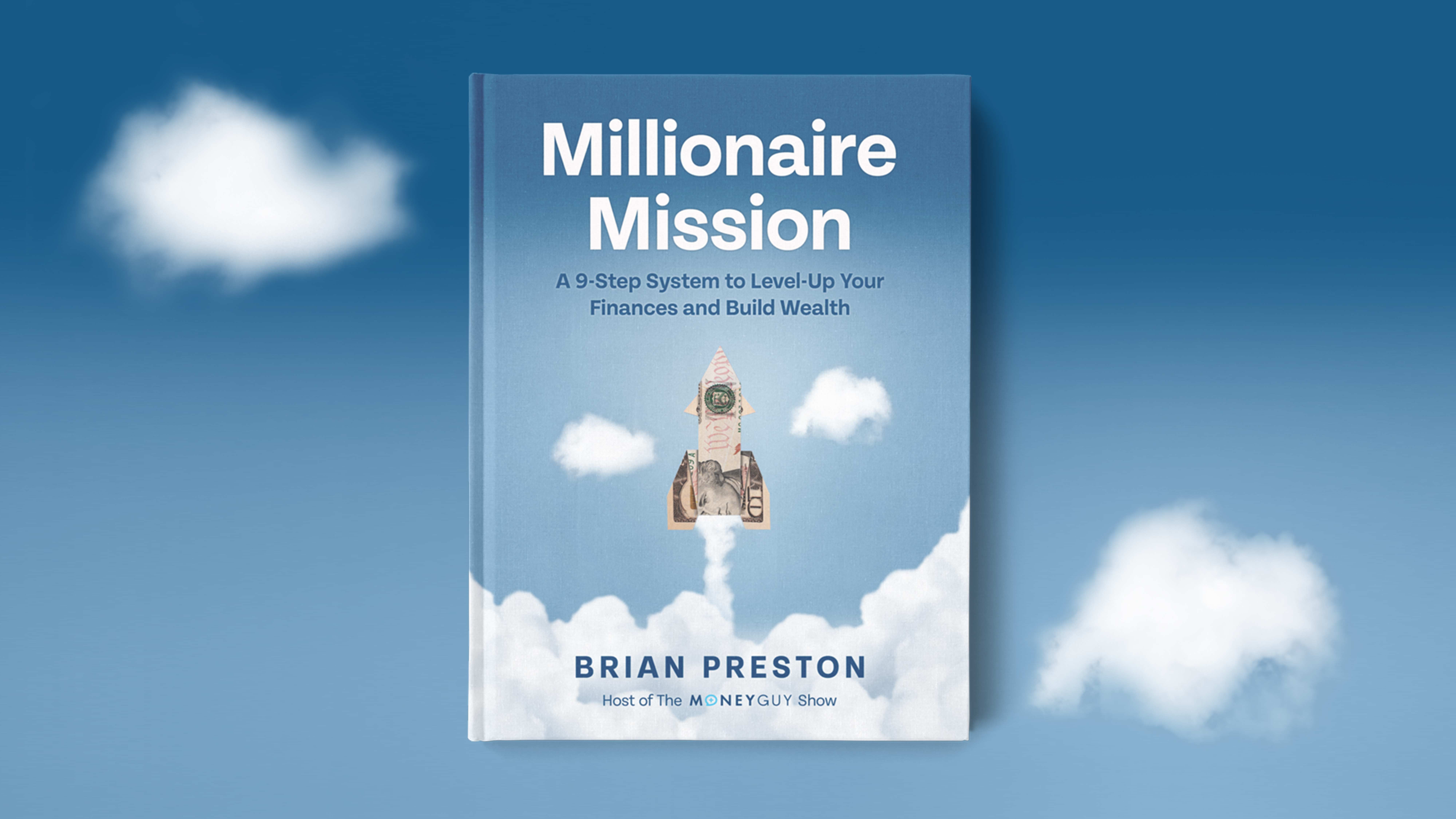
Change your life by
managing your money better.
Subscribe to our free weekly newsletter by entering your email address below.

Subscribe to our free weekly newsletter by entering your email address below.
Student loan debt has become one of the most significant financial hurdles facing young Americans today. The problem has reached epidemic proportions, with a surge in past-due loans sparking new concerns about the health of the U.S. economy.
Today, let’s break down how student loan debt is affecting major life milestones—particularly homeownership—and review practical strategies to navigate these challenges.
According to the Education Data Initiative, the average U.S. undergraduate student graduates with about $25,670 in student loan debt.
By generation:
Millennials: $33,319 average balance
Gen Z: $30,693 average balance
Baby Boomers (historically): Around $2,000 (≈$15,000 in today’s dollars)
This increase is directly tied to soaring education costs. Since 1963, college tuition has risen 197% (inflation-adjusted), far outpacing general inflation.
Despite similar balances, Gen Z is paying significantly more each month than millennials:
Millennials: ~$220/month
Gen Z: ~$300/month
36% of Gen Z borrowers pay over $300 monthly
Only 18% of millennials do the same
Meanwhile:
60% of millennials pay less than $100/month
Only 37% of Gen Z borrowers are that low
Why the difference?
Gen Z is facing higher interest rates
They are less likely to use forbearance or income-driven repayment plans
Many of these repayment programs are changing due to legislation, limiting access for newer graduates
Silver lining: Gen Z’s larger payments mean they may pay down principal faster and escape debt sooner than millennials who chose lower payments but longer terms.
1991 median age of first-time homebuyer: 28
Today’s median age: 38
A Zillow survey found:
94% of Americans prefer to own a home
21% of Gen Z and millennials currently renting have no plans to buy
40% of Gen Z and 45% of millennials say saving for a down payment is taking longer than expected
23% of Gen Z and 21% of millennials plan to buy cheaper homes than they originally envisioned
Don’t fall for the 20% down myth
Many loan programs allow for 3–5% down payments
Nearly 80% of Money Guy clients put down less than 20% on their first home
Leverage high-yield savings accounts
Today’s interest rates can meaningfully boost savings
Rethink the timeline
Delaying homeownership can actually help build wealth
Investing earlier instead of rushing into real estate gives compound interest more time to work
Focus on what you can control
Savings rate
Budget
Repayment plan
Set mini-milestones
Max out your 401(k) employer match
Build an emergency fund
Pay off high-interest credit cards
Automate savings and investments
Schedule transfers on payday
Treat savings as a non-negotiable expense
Understand refinancing and repayment tools
Refinancing may reduce monthly payments
Caution: Refinancing federal loans into private loans means losing federal protections and forgiveness programs
Yes, today’s numbers can feel overwhelming—bigger loan balances, steeper monthly payments, and delayed milestones. But hopelessness isn’t warranted.
Gen Z and millennials are proving to be financially adaptive and resourceful
Strategic planning and consistent habits can turn challenges into opportunities
Progress may involve detours, but forward momentum matters most
Whether your next milestone is:
Building an emergency fund
Paying off debt
Saving for a home
Increasing retirement contributions
Every step moves you closer to financial independence—and your great big beautiful tomorrow.
Subscribe on these platforms or wherever you listen to podcasts! Turn on notifications to keep up with our new content, including:
Student loan debt has become one of the most significant financial hurdles facing young Americans today. The student loan problem has reached epidemic proportions. A surge in past-due student loans is sparking new concerns about the health of the U.S. economy. Whatever you do, do not take out a Parent PLUS loan.
New data shows a record number of borrowers are several months behind on payments. While previous generations graduated with manageable debt loads, Millennials and Gen Z are entering adulthood in a perfect storm: stagnant wages, skyrocketing living costs, and unprecedented education expenses. Today, I want to walk you through exactly how student loan debt is affecting major life milestones—particularly homeownership—and provide some practical strategies to navigate these challenges. Let’s dive right in and see what the research is telling us.
Let’s talk about the sheer scale of student loan balances today, because it’s gotten completely out of control. According to the Education Data Initiative, the average U.S. undergraduate student graduates with approximately $25,670 in student loan debt. But when we break it down by generation, we see some interesting patterns. Millennials are carrying an average balance of $33,193, while Gen Z graduates have a slightly lower average of $30,693.
For context, these figures are dramatically higher than what previous generations faced. According to Yahoo Finance, the average Baby Boomer graduated with around $2,000 in student loan debt—that’s just under $15,000 adjusted for inflation in today’s dollars. Still just a fraction of what students are borrowing today. This stark increase directly results from the soaring cost of higher education. College tuition has risen by 197% since 1963 after adjusting for inflation, far outpacing the general inflation rate. One effect of this is that students now rely more heavily on loans to cover these escalating education costs.
What’s particularly interesting is that despite Gen Z carrying slightly lower average balances than Millennials, they’re actually experiencing a heavier monthly repayment burden. On average, Millennials are paying about $220 per month toward their student loans, while Gen Z is paying significantly more—around $300 a month. Thirty-six percent of Gen Z borrowers are paying more than $300 monthly compared to just 18% of Millennials. At the other end of the spectrum, 60% of Millennials are paying less than $100 per month compared to only 37% of Gen Z.
Why such a stark difference despite similar loan balances? Gen Z is facing higher interest rates on their loans. They’re also less likely to be utilizing forbearance or income-driven repayment plans that have been popular among Millennials. This might be partly due to differences in financial literacy, but it’s also worth noting that many of these payment relief programs are changing with recent legislation, and those same tools may not be available to those graduating now or in the next few years.
There is, however, a silver lining to these higher payments. Gen Z borrowers making larger monthly payments are actually paying down their principal faster, which means they might eliminate their student loan debt sooner than their Millennial counterparts who opted for lower monthly payments but longer repayment terms. If you’re feeling overwhelmed by your monthly payments, don’t freeze up. Talk to your loan servicer about restructuring options. We’ve covered strategies for student loans here. And remember to build some breathing room into your budget. Even small automatic transfers into a separate savings account can give you a cushion when you need it most.
Now, let’s address how these loan burdens are affecting one of life’s major milestones: homeownership. The statistics here are striking. In 1991, the median age of a first-time homebuyer was 28 years old. Today, if you can believe it, it’s 38 years of age—a full decade later. That’s not entirely due to student loans, of course, but they are definitely a contributing factor. A Zillow survey found that 94% of Americans would prefer to own a home, but 21% of Gen Z and Millennials who are currently renting say they have no plans to buy.
Still, it’s not all doom and gloom. Thirty percent of respondents have successfully purchased homes, with 17% having done so in just the last five years. For many though, the path to homeownership is taking longer than expected. About 40% of Gen Z and 45% of Millennials report that saving for a down payment is taking longer than they had anticipated. Additionally, 23% of Gen Z and 21% of Millennials say they’re planning to buy a cheaper house than they had initially envisioned.
If homeownership is a goal for you, there are a few key strategies to consider. First, don’t get stuck on that 20% down myth. Many loan programs allow for down payments as low as 3 to 5%, which can significantly accelerate your timeline. As financial advisors, we work with wealthy people from all over the country, and among our clients, almost 80% put down less than 20% on their first home. I’m included in that stat. That may mean you’ll have higher monthly payments and less initial equity, but this approach can help you become a homeowner years sooner.
Also, leverage high-yield savings accounts to grow your down payment faster. In today’s interest rate environment, you can find accounts paying substantial returns, which can give your savings a meaningful boost over time. And here’s a perspective shift: delaying homeownership can actually be financially advantageous if you don’t let society’s timeline define your success. Young Americans often buy too much house too soon, tying up all their liquidity into real estate. By postponing a home purchase and redirecting a portion of what would have gone toward a down payment into investments instead, you give compound interest more time to work in your favor. This approach can accelerate your path to financial independence—owning your time and life that much sooner—rather than rushing into homeownership simply because it’s the expected next step. We’ve done a deep dive on buying vs. renting here.
When we step back and look at the big picture, yes, the numbers can feel overwhelming: bigger loan balances, steeper monthly payments, and delayed life milestones. But hopelessness isn’t the answer, and it certainly isn’t warranted by the data. Gen Z and Millennials are proving to be very resourceful, financially literate, and adaptive in ways previous generations weren’t forced to be. By using smart tools—savings, automation, refinancing options, realistic home-buying strategies—you can make real progress even in a challenging economic landscape.
And with that, let’s look at some other key tools and strategies you can employ to make sure you’re maximizing your financial life. Number one, and maybe most importantly, focus on what you can control: your savings rate, your budget, your repayment plan. The external economic factors may be beyond your influence, but your personal financial choices remain firmly in your hands. Automate this process.
Next, set up other mini milestones for yourself. Maybe you can’t buy a home yet, but that doesn’t mean you can’t max out your employer’s 401(k) match, potentially doubling your savings rate. You can also build an emergency fund, or you can pay off a credit card and free up cash flow on your way to student loan payoff or homeownership. These smaller wins keep you advancing toward financial health, even while managing student loan debt. Check out our wealth multiplier principle.
And when you’re doing this, set up automatic savings and investment features. The best way to ensure you’re consistently saving is to automate the process. Schedule transfers from checking to savings and investments on the same day you get paid, treating savings as a non-negotiable expense and creating forced scarcity in your life.
Finally, about student loans specifically, know the repayment and refinancing tools available to you. Depending upon which repayment method is right for you, this could potentially adjust your monthly payment to make it more affordable. For refinancing, private lenders typically have no upfront fees and may offer benefits like income-based repayment plans and forbearance options. However, be cautious about refinancing federal loans, as you’ll lose access to federal forgiveness programs and other protections.
The journey to financial stability has always been challenging, but the journey is completely worth it. While previous generations faced their own obstacles, today’s landscape presents different opportunities for growth. Yes, education costs are higher and the economy has shifted. But young adults today also have access to more tools, resources, and flexibility than ever before. With strategic planning, disciplined habits, and a clear understanding of the available tools and options, it’s entirely possible to manage student loan debt while still progressing toward your major life goals.
Remember, financial progress isn’t always linear. Sometimes it involves detours, delays, and recalibrations. What matters most is maintaining forward momentum and making informed decisions that align with your long-term objectives. Whether your next milestone is building an emergency fund, paying off high-interest debt, saving for a home, or increasing your retirement contributions, each step brings you closer to your great big beautiful tomorrow.


New Child Checklist
Planning for a new child is so exciting! But as parents, we know it can also start to feel overwhelming.…
View Resource


How about more sense and more money?
Check for blindspots and shift into the financial fast-lane. Join a community of like minded Financial Mutants as we accelerate our wealth building process and have fun while doing it.




It's like finding some change in the couch cushions.
Watch or listen every week to learn and apply financial strategies to grow your wealth and live your best life.
Subscribe to our free weekly newsletter by entering your email address below.